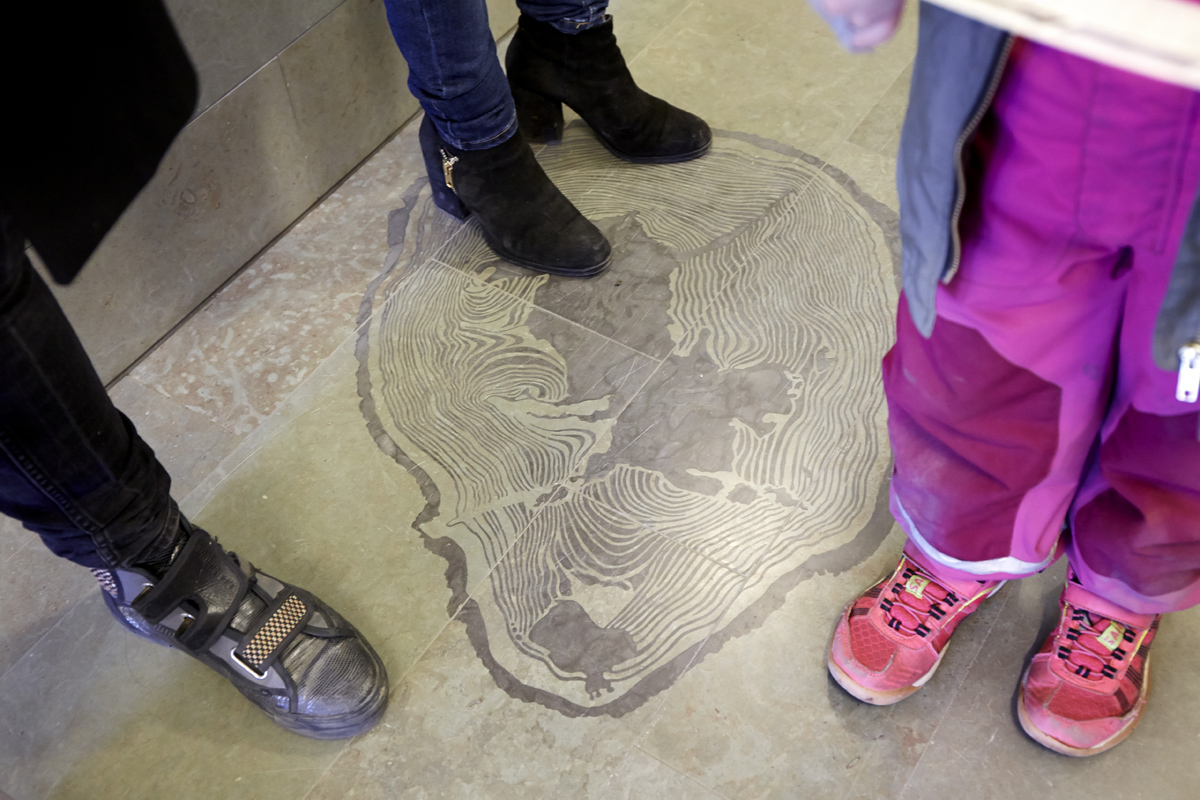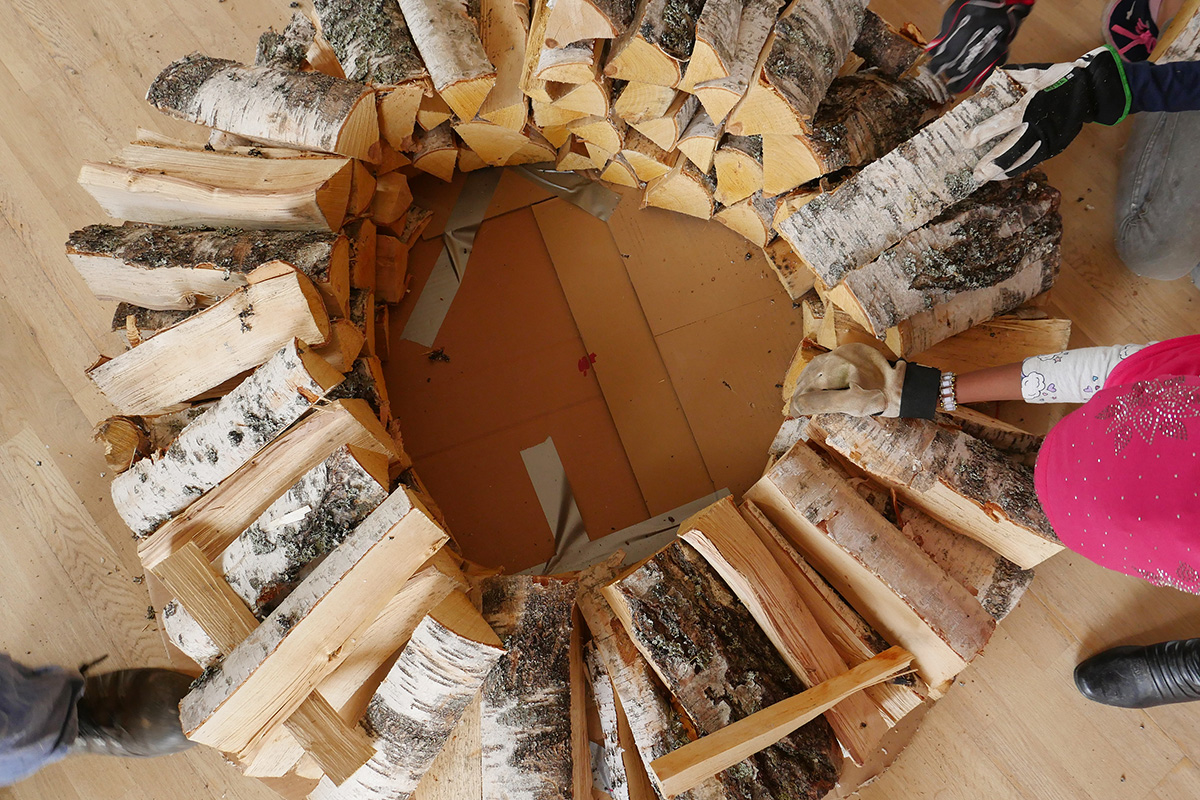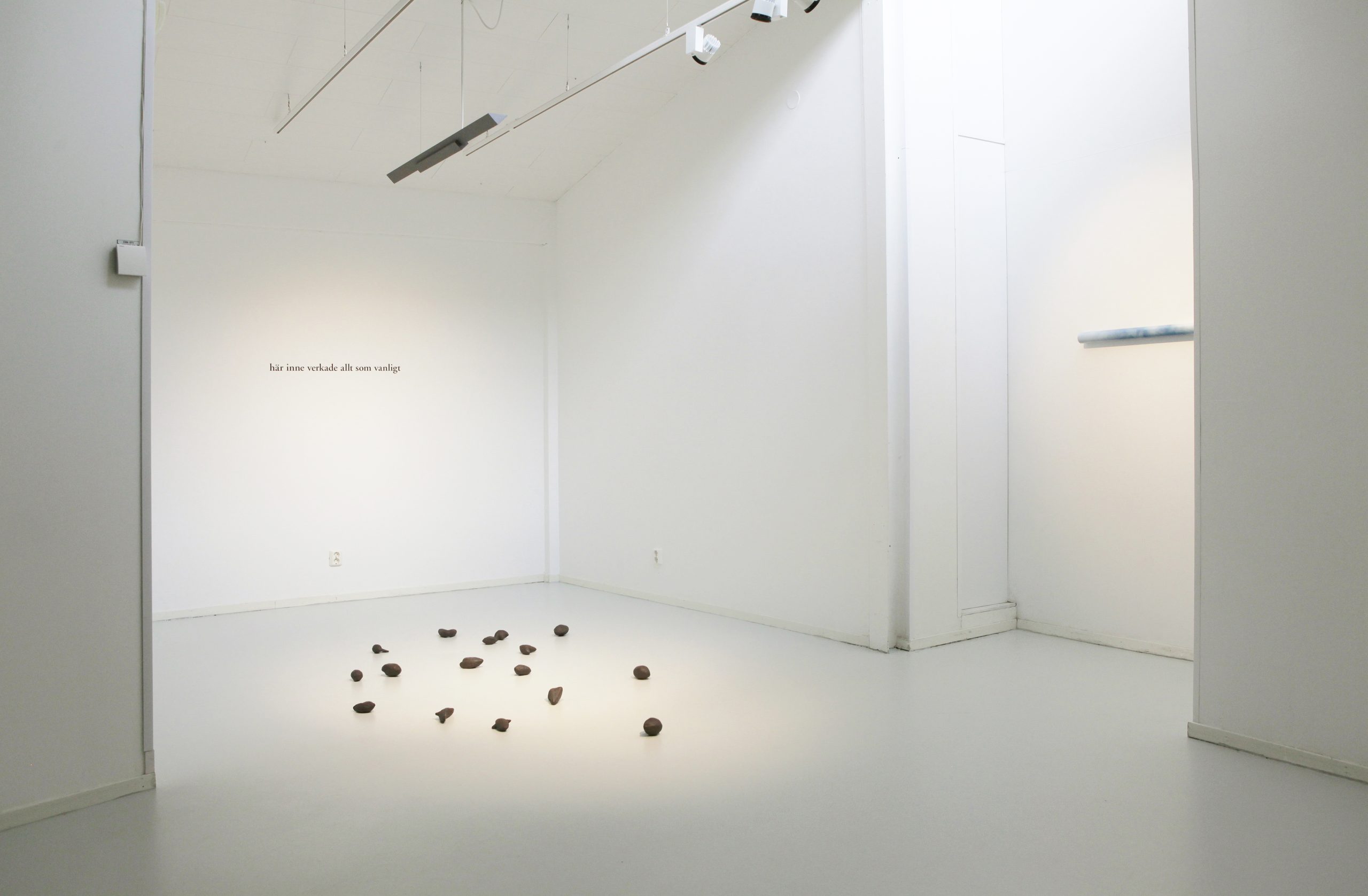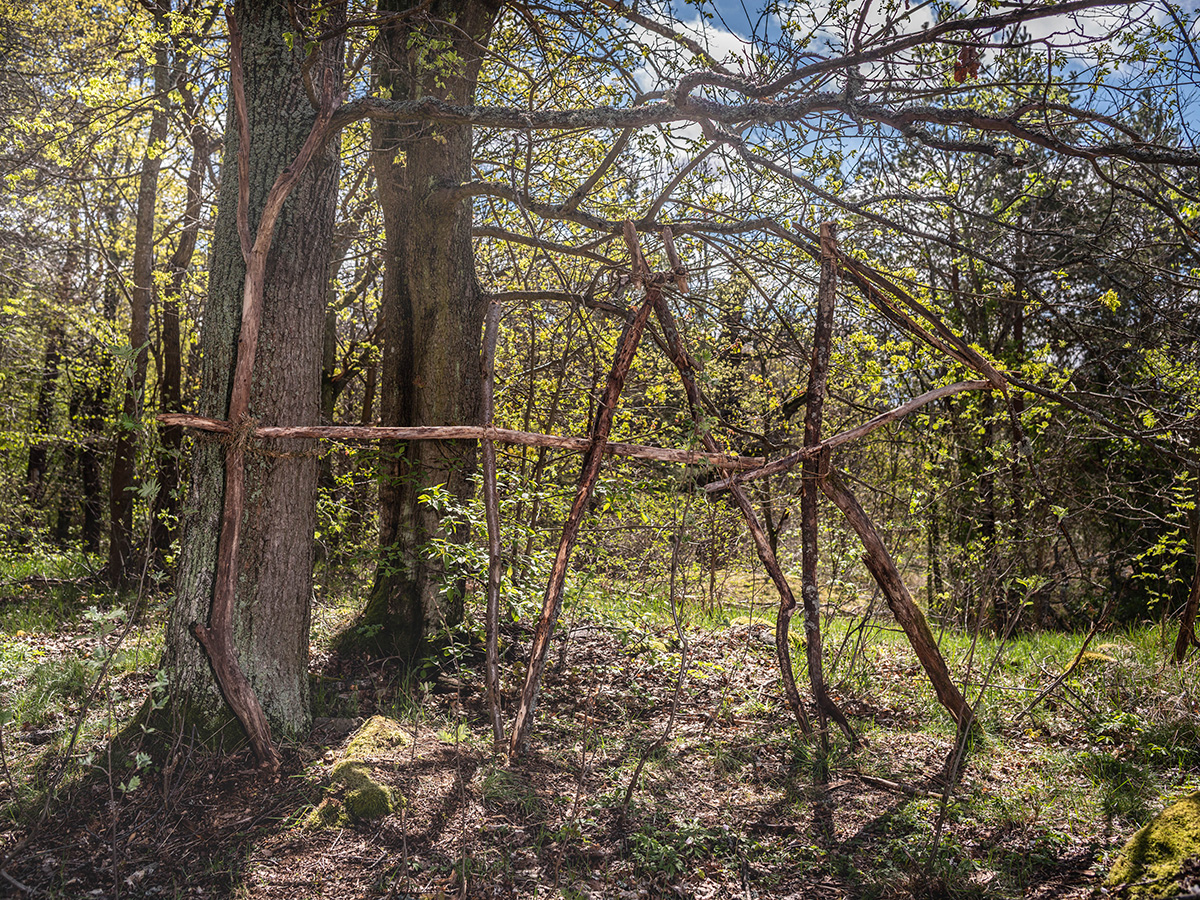Nine site-specific sentences have been sandblasted into the built environment at various locations in the residential area Vallastaden, Linköping. The sentences address people moving in the area, while walking on the sidewalk, crossing a corner or looking over a railing. The main character in the texts is the reader themselves in relation to their own posture, the surrounding nature and the bypassing moment.
Pictured sentences:
my curiosity | around the next corner | led me further
I moved closer to the maple | in the direction of the text | towards City Gross | Kaliningrad | Damascus
there | against the wall | I had to bend down | to read on
I could have stepped on them | but read the words | neck facing the sky
if the light were to fall against the letters | my shadow on the ground | underneath would be darkness, roots, earth
Commissioned by the municipality of Linköping for Vallastaden
Art consultant: Åsa-Viktoria Wihlborg for ArtPlatform
Special thanks to: Khashayar Naderehvandi and Rikard Heberling





